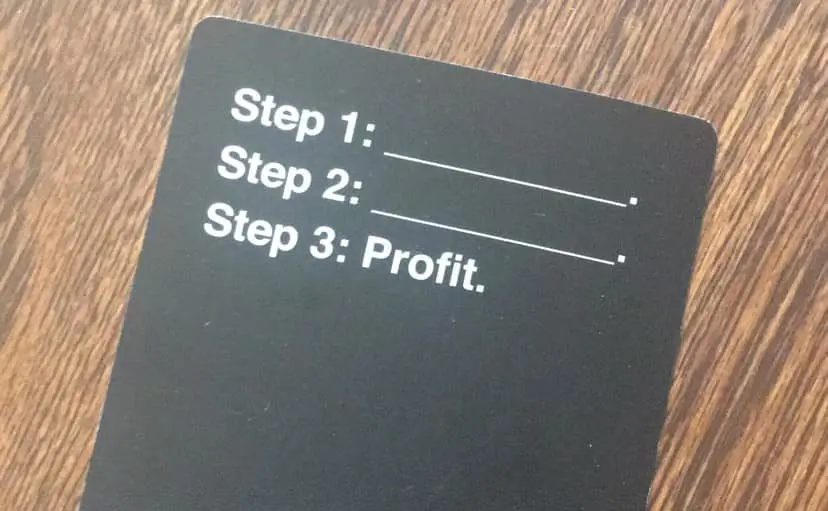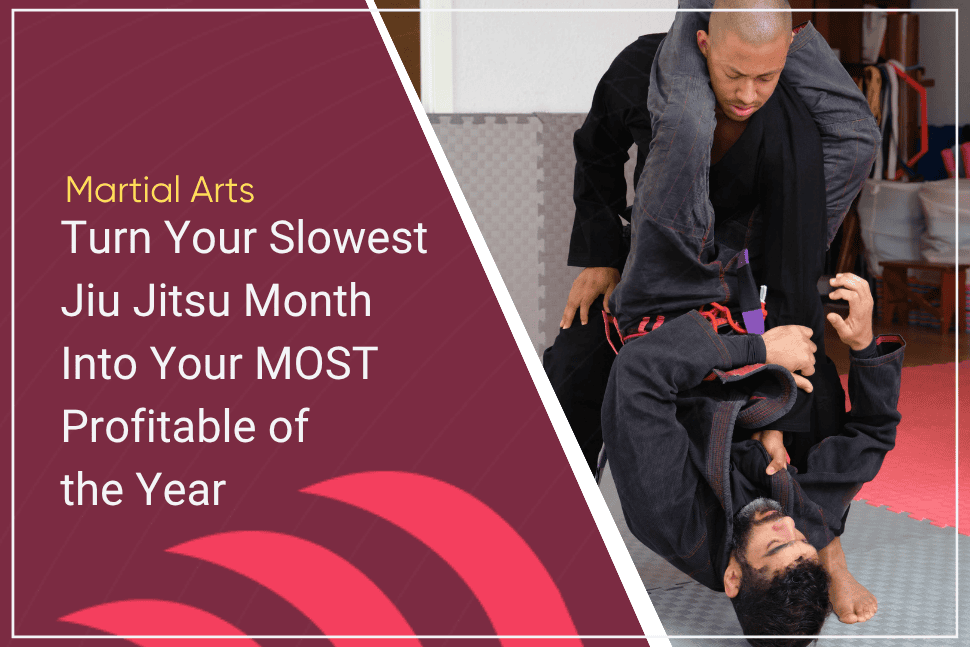…without selling out, watering down, or becoming a McDojo
Effectively marketing your martial arts school doesn’t mean you have to sell out like a McDojo or burn through tons of capital you don’t have.
Unfortunately, dojo owners tend to shy away from professional marketing techniques because they perceive them to be shady, dishonest, and manipulative.
This was true in decades past, but the marketing world has changed for the better, and the best marketing practices available now can explode your business without hurting your conscience or polluting your reputation.
But there’s more good news: these marketing methods also help lower the amount of money you have to spend to acquire new students.
So what’s the best marketing method for martial arts studios? Well, there’s one particular method that stands out above the rest, a tried-and-true system that has worked regardless of technology changes for decades and decades.
A system that, with modern technology, can be 100% automated…
That system is known as direct response marketing. And in this article, I’ll show you how you can design and implement your own direct response campaign.
Direct Response: The Little-Known Secret to Building a 6-Figure Dojo and an Endless Stream of Eager New Students
Building a direct response marketing system isn’t hard. It does take a little effort up front, but once you have it built and tested, it’s an effective system that works for you as long as you need it to, with no extra effort.
I’ve broken it down into a simple 4 step process:
- Build a lead magnet
- Set up an email-gathering page
- Follow up with emails
- Ask for a signup
It sounds unimpressive, but the magic is in the content itself: the lead magnet, the email writing, and the ask. And the best part? It’s all totally automated.
That’s right. Once you’ve developed and implemented it, you can almost set it and forget it — only checking in once or twice a week to make sure your ads are doing alright.
Step 1: Build a Mouth-Watering “Lead Magnet”
This step is fun. It’s where you get to flex your creativity and talk about the benefits that your martial arts training can provide to clients. Lead magnets, sometimes called content assets, can come in any of these forms:
- Reports
- Whitepapers
- eBooks
- Case Studies
- Checklists
- Webinars
- Audio/video courses
- and more
In his book, The No B.S. Guide to Direct Marketing, direct response titan Dan Kennedy explains how this approach to marketing turns the traditional approach on its head:
The karate school doesn’t advertise itself, its lessons, or a free lesson. Instead, it advertises a free report by its owner: The Parents’ Guide to Cyber-Bullying and Bullying: Raising Emotionally Strong Kids. (p. 19)
The report Dan mentioned is an example of how you might get the attention of parents so they’ll sign their children up. You also might consider writing a resource on building confident, socially-adept children. Both are incredibly important to parents.
But for adults, you might put together a basic self-defense resources or a guide to managing stress through martial arts-related skills like physical fitness and breathing exercises.
The trick is understanding what your target market’s main pain point is and then showing how your service (martial arts training) alleviates or resolves those pain points.
Here’s a pro tip: video courses are huge. A lead magnet that might have done okay as an ebook could do great as a video course. Even better, why not take the script for your video course, make it into an ebook, and give away both?
Step 2: Set Up a Landing Page that Gathers Emails in Exchange for the Lead Magnet
This step is the glue and duct tape that makes the whole system work. If you can get leads to give you their email in exchange for your lead magnet, marketing your services to them gets remarkably easier (and cheaper).
Known as a “landing page,” the email-gathering page provides information about the lead magnet in a way that entices potential clients to give you their email in exchange for it. You do this by speaking to the reader in terms of the benefits it offers them.
It’s important to know that this page has one, single mission: get the email optin. Therefore, the page should not have any elements that distract from that goal.
Here are common webpage elements that should not be on a landing page:
- Navigation bar
- Hyperlinks
- Other actions items, such as seasonal deals or a phone number
Removing these elements gives your potential clients no choice but to input their emails for your content asset or else simply leave. If they landed on that page because they were interested in the headline, then chances are they’ll put their email in.
Step 3: Write a Sequence of Emails to Build a Relationship with Your Leads (and Prove the Value of Your Program)
This is where that mystical transformation happens. This is the process by which a lead gradually “converts” into a paying customer before you’ve even met them face-to-face and without interaction or effort from you at all.
But it’s easy to mess this part up. If you ask for a trial or membership sign up too soon, you’ll lose them. You don’t propose marriage on the first date; so with direct response marketing, you don’t propose a buy on the first email you send.
Instead, you build a relationship with your new leads before asking them to invest in your services. By serving them valuable information in a friendly manner, they will know, like, and trust you by time you ask them to sign up.
The best way to do that is to write an email sequence like this:
- Deliver the lead magnet and welcome the new lead to the email list
- Send more helpful content that also demonstrates why the lead should want your service
- Send an incredible offer to sign up that they can’t pass up on
And then put together an autoresponder series using our built-in email automation system, or with an ESP service like MailChimp or Klaviyo, so that they send automatically when a new member subscribes to your email list.
Step 4: Ask Leads to Sign-up to Your School with an Offer So Good, They Can’t Pass it Up
At the end of your email sequence, you send one more email to your prospects with a strong call-to-action (CTA).
Essentially, you present them with an awesome, limited-time deal, and then ask them to sign up. Mechanically, that means grabbing their attention with the email and directing them to a second landing page that unpacks the deal and asks for the buy.
There’s a few more important tips to make sure the landing page is as effective as it can be:
- Give a time limit (“the deal ends October 1st”)
- Limit capacity (“only 10 spots left”)
- Unpack everything they get, no matter how small
- Remove all risk (“if you don’t love it, I’ll give you a 100% refund, no questions asked”)
Why are these important? People have great intentions, but they’ll take any excuse not to act. Even if they want to sign up, failing to give them an immediate reason to do so could result in them walking away from the page and eventually forgetting about it.
These factors create urgency in the minds of prospective members because they’re afraid they’ll miss out on the great deal if they don’t act. It isn’t bullying or dishonest — you should set a real time limit and a real cap on any trial or membership you sell. It works.
Remember that just because you’ve reached the end of your sequence doesn’t mean you have reached the end of your email marketing. As long as prospects remain subscribed to your email list, you can continue to provide them value and periodically ask for a sign-up. You’ll be surprised how many prospective members become students months after first signing up to your list.
How Do I Drive Traffic to My Landing Page?
Easy — run Facebook and Instagram ads!
Martial arts advertising is a separate skill from building a direct response funnel, but it is critical to making it work. Since pay-per-click (PPC) advertising is outside of the scope of this article, I’ll leave you with some helpful tips to make sure your ads work cohesively with your direct marketing system:
- Make sure the headline on your email landing page matches the messaging in your ad’s headline
- Target individuals within a 5 mile radius around your school between the ages of 25 and 45 (parents) or 20 to 50 (adult students)
- Use ad images of happy faces, preferably of your own students instead of stock images
You can also put the URL of the landing page on a business card and hand it out at events and when you’re out around town. Advertising martial arts doesn’t have to be constrained to social media ads!
Or, go really old school, and send out direct mail campaigns straight to the mail boxes in the neighborhoods around your dojo, prompting them to visit your landing page. (Direct mail actually has a stronger response rate than digital ads — so it stands to reason martial arts direct mail marketing would, too!)
Conclusion
Marketing doesn’t have to turn you into a dishonest McDojo owner, nor does it have to be an expensive waste of time. Of all the effective marketing methods available now, direct response marketing stands out above the rest.
How does direct response work? It’s a sort of “funnel” that provides free valuable information to potential clients, fosters a relationship with them, and only then asks them to sign up for a membership or trial.
You can build this system in 4 easy-to-follow steps:
- Build a lead magnet
- Set up an email-gathering page
- Follow up with emails
- Ask for a signup
And with modern marketing technology like ActiveCampaign, or the built-in email marketing automations we support through our marketing features, you can even automate the system so that you don’t do any work until a member shows up to your school.
This article is part of a broader series on martial arts marketing. Click here to check out our guide, “Martial Arts Marketing: The Ultimate Guide.”
 Gym Owner Statistics: The State of Gyms, Member Trends, and Usage Data
Gym Owner Statistics: The State of Gyms, Member Trends, and Usage Data




 EN (English)
EN (English)
 JA (日本語)
JA (日本語)